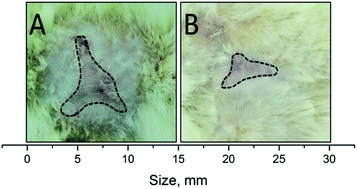Authors: Volodina K.V., Solov`eva N.L., Vinogradov V.V., Sobolev V.E., Vinogradov A.V., Vinogradov V.V.

Abstract
The synthesis of new biocomposites exhibiting a synergistic effect is a promising step in the healing of acute and chronic wounds. In the present study we have combined four materials: chlorhexidine digluconate as a antimicrobial agent, lidocaine as a painkiller, chymotrypsin as a necrolytic agent, and sol–gel processed alumina as a carrier for the sustained delivery of drugs and as an established wound healer. Composites were synthesized and characterized for surface morphology, crystalline structure and in vitro drug release. In vivo wound healing efficacy was assessed using a full thickness excision wound model in Wistar rats. The main result, was that a marked decrease in scar size was observed because of the wound healing composite, in fact the area of the scar in the test group of rats was 2.4 times smaller than that in the control group. Wound closure analysis revealed that complete epithelialization was observed after 15 ± 1 days using the biocomposite, whereas this took 17 ± 1 days and 19 ± 1 days using the healing solution alone or pure alumina gel, respectively. It was concluded that the synergistic combination of healing drugs, with sol–gel alumina as dressing material, provides a highly attractive biomaterial for the treatment of surface wounds, burns and foot ulcers.
DOI: 10.1039/C4RA09015B